I got the idea of pointers' logic generally, but there is an unclear point for me that is related to the piece of code underlain.
#include <iostream>
using namespace std;
int main ()
{
int first = 50,
second = 150;
int * p1, * p2;
p1 = &first; //p1 is assigned to the address of first
p2 = &second; //p2 is assigned to the address of second
*p1 = 100; //first's value is changed as 100 by assigning p1's value to 100
*p2 = *p1; //now p2's value should be 100
p1 = p2; //I think we want to change p1's adress as p2
*p1 = 200; //I expect that the new value of p1 should be 200
cout << first << second;
return 0;
}
Program prints first=100 and second=200, but as I commented above, I expect that p1's value is changed as 200. But It still remained as 100. What is the point of that?
